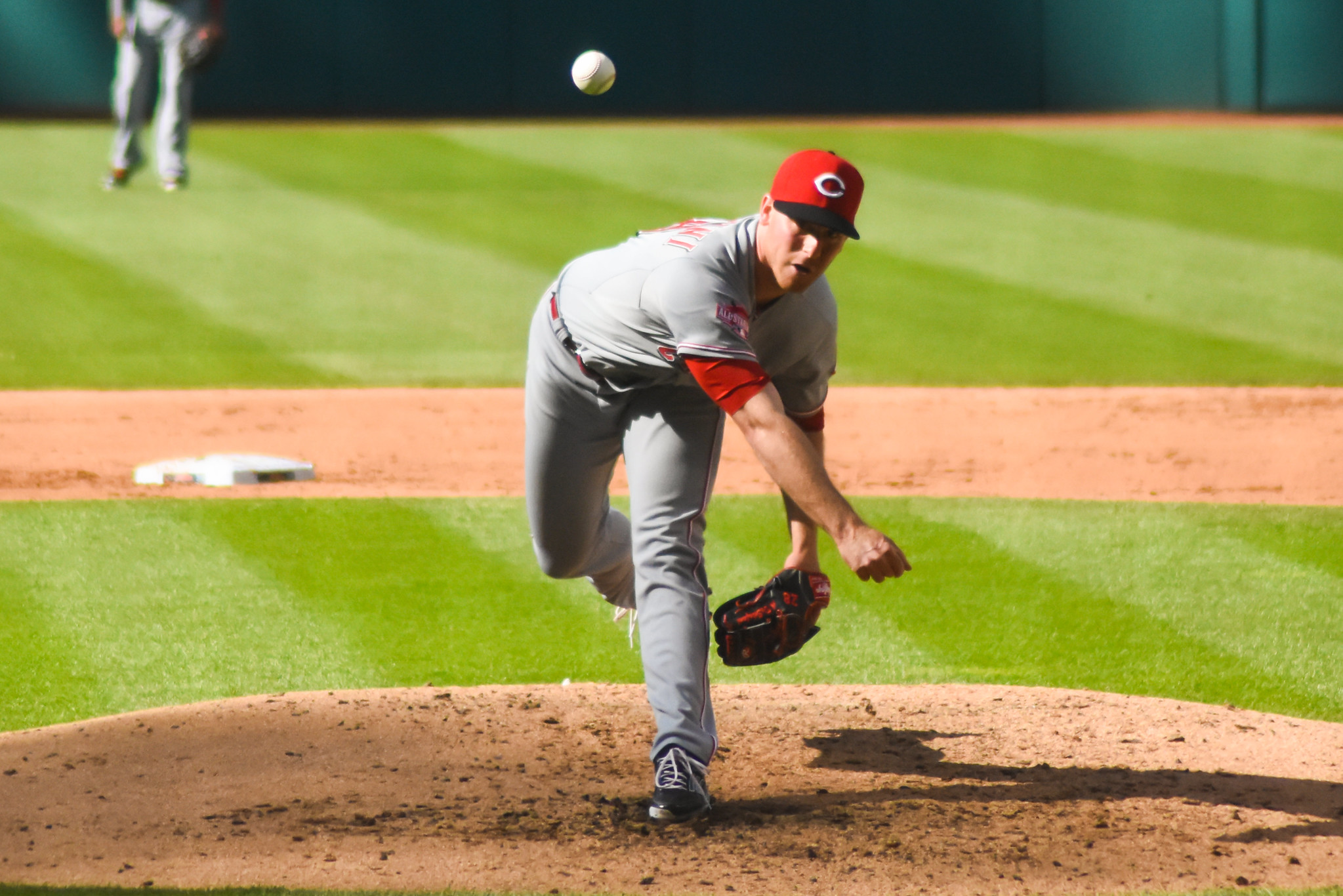
The Reds’ rotation for 2020 seems to be set with Sonny Gray, Luis Castillo, Trevor Bauer, Anthony DeSclafani, and Wade Miley. That rotation, combined with an improved offense, leads to the belief that the Reds are serious playoff contenders in 2020. While all the talk has been about Gray, Castillo, and Bauer, Anthony DeSclafani has become sort of the forgotten man of the Reds’ rotation.
DeSclafani has previously had success for the Reds, most notably his 2016 season when he posted a 3.28 ERA. While his 3.96 FIP and 4.07 SIERA weren’t as convinced with his 2016 success, he was still seen as an above-average pitcher. As a matter of fact, as far as SIERA and xFIP, which neutralizes HR/FB%, are concerned, DeSclafani has been an incredibly consistent pitcher throughout his entire career, though his xFIP and SIERA both trended upward in 2019.

At the same time, there are signs that DeSclafani is improving, and those signs led to him being pegged as a breakout candidate for 2020. DeSclafani’s strikeout rate has steadily trended up in every season of his career so far, rising to 24.0% in 2019, while his walk rate has remained low. Additionally, league-wide ERA, FIP, and xFIP trended upwards in 2019, to 4.51, while league-wide SIERA rose to 4.41, so DeSclafani’s season-long numbers were still better than the league average.
The biggest sign that DeSclafani could break out in 2020 is found by looking at a change he made in June. A quick glance at his splits shows that there was indeed a notable improvement from June 1 through the end of the season. After posting a 4.97 ERA/5.64 FIP through the end of May, DeSclafani posted a 3.37 ERA/3.84 FIP the remainder of the year. On the surface, the improvement is noticeable, but to truly understand the reasoning behind the surge, you must dive deeper.

Upon further inspection, DeSclafani began making a major change to his mechanics around this time. Between May and June, you can see a significant drop in the release point on DeSclafani’s curveball, then another slight dip in July before returning to near his June level. Heading into the prior offseason, DeSclafani sought to tweak his delivery and shorten his arm path, as the Enquirer’s Bobby Nightengale wrote earlier this week. In June, he finally found the right formula.

The chart above gives a better way to visualize DeSclafani’s release points on his curveball, with the left graphic representing the beginning of the season through the end of May, and the right graphic representing from June 1 through the end of the season. As you can see, there was a fairly significant change.

If you look closer, on a start-by-start basis, it appears DeSclafani was gradually dropping his arm angle from mid-May until a start on June 18 against Houston. It stands to reason that this is when he found an arm angle he was comfortable with, which he maintained from that point on. This could also help to explain a rough stretch in the middle of May, in which DeSclafani failed to complete more than four innings in three consecutive starts, allowing four earned runs in each start, and allowing opponents to slash .365/.393/.846 in those starts.
While the curveball is the focus, it is worth noting that DeSclafani changed his arm angle on all pitches around this time, not just his curveball. The curveball, however, was the pitch that yielded the best results with the improved arm angle. A better curve release led to DeSclafani inducing more ground balls and improved success against left-handed batters, as his curve is a pitch he throws almost entirely to lefties.
Prior to the change, over the first two months of the season, DeSclafani allowed a .349 xwOBA to LHH on his curveball, and a .397 xwOBA to LHH overall. After the change, from June 1 onward, he allowed just a .133 xwOBA to LHH on his curveball, and .287 to LHH overall. This is primarily due to the better curve release allowing DeSclafani to induce more ground balls, as he raised his GB% on his curveball from 28.6% against LHH prior to June, to 61.1% after June 1. Additionally, DeSclafani saw a notable bump in GB% on sliders against LHH after the arm angle change as well, going from 27.8% before the change to 37.8% after.

As a whole, the arm angle changes led to a change in DeSclafani’s entire batted ball profile. June 1, his ground ball rate surged, going from 35.9% to 46.5%, a rate that would be nearly 4 percentage points better than his career average. The improvements don’t end there, with DeSclafani also improving his soft hit rate from 15.0% to 18.4%.

The other notable change in his batted ball profile was an increase in infield fly ball percentage from 7.2% to 12.7%. Fangraphs’ FB% includes IFFB%, so when adjusting to exclude infield fly balls, DeSclafani allowed 36.0% fly balls before June 1, and just 22.6% after June 1. Naturally, that led to DeSclafani allowing less HR after June 1, dropping his HR/9 from 2.3 to 1.2. The same is reflected in the rate of doubles he allowed after June 1, allowing just 17 in 112 1/3 innings, compared to 11 in 54 1/3 innings through the end of May.
These changes in batted ball profile led to DeSclafani allowing just a .278 wOBA to opposing hitters after June 1. For reference, a .278 wOBA allowed would have been ranked 20th best among all starters facing a minimum of 350 batters in 2019, just one spot behind teammate Luis Castillo.
If the progress that DeSclafani made in the second half can be sustained in 2020, he will make for an interesting pitcher to watch. At the very least, DeSclafani can provide valuable innings to a team in a postseason hunt, but at his best, he could line up as one of the best #4 starters in the league.
Photo Credit: Eric Drost


